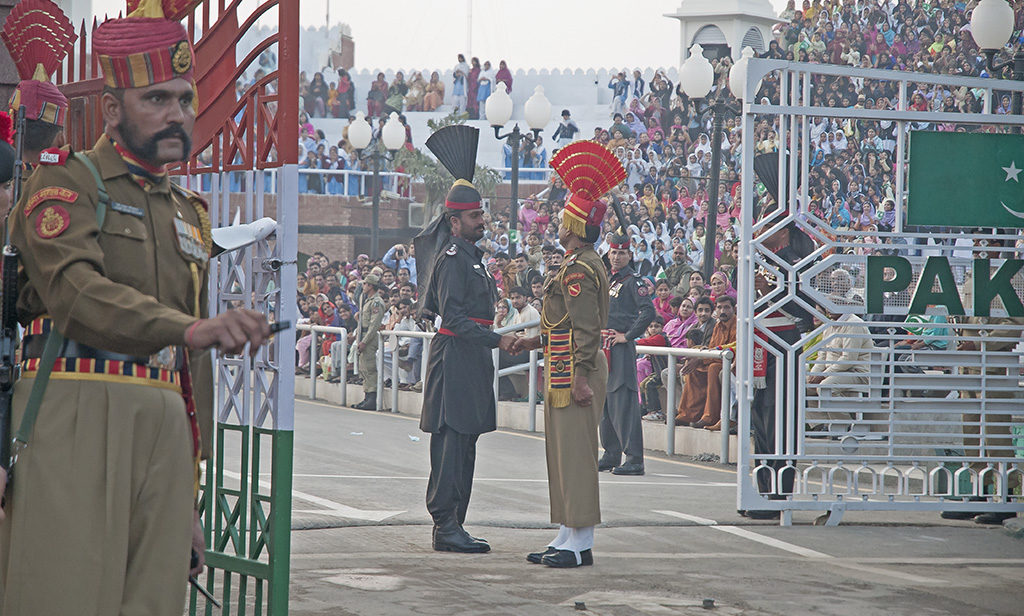
The newly-launched book August Voices by Indian peace activist Sudheendra Kulkarni presents a glimmer of hope for South Asia. Regional affairs have been tense lately, leading to an air of pessimism over the region. Cooperation has long been held hostage by India and Pakistan’s contentious relationship. Efforts at conflict resolution by both states have gone through an unending cycle of hostility, stability, relative optimism, and hostility again, without achieving any sustainable results. As a result, the region has suffered, being one of the least integrated regions in the world. 2016 witnessed a brief period of optimism with the announcement of a comprehensive bilateral dialogue between India and Pakistan, but this was to no avail. The present state of affairs is likely to continue unless a practical, comprehensive, and sustainable solution that addresses and mitigates the root cause of this confrontational relationship is found. Kulkarni has come up with an out-of-the-box solution that does just that.
In his newly-released book, Kulkarni suggests a confederation of Pakistan, India and Bangladesh to address the Kashmir dispute, and to “harmonize nationalism of all three states” in the long term. Is Kulkarni’s idea protracted and demanding? Yes. Is it impractical and idealistic? No. In fact, it is exactly what the founders of Pakistan and India had envisioned. While demanding a separate state for Muslims, Muhammad Iqbal, in his 1930 Allahabad address, envisioned a similar arrangement for collective security on the subcontinent.
One may wonder how a confederation could be established in a region where even regional economic integration has remained an elusive dream. However, contrary to the South Asian Association for Regional Cooperation (SAARC), which is an economic cooperation effort with no scope for political settlement, a confederation offers the possibility of a sustainable political solution without which economic cooperation has not been possible. In other words, a South Asian confederation could provide the political foundation that is necessary for economic cooperation to succeed.
It is undeniable that there are numerous obstacles to the establishment of a South Asian confederation. Decades of bilateral dialogues have been unable to cut through persistent bilateral enmity and distrust. The first step is willingness on the part of all parties, through the realization that the status quo is dangerous. The leadership in all three states should be sincerely willing to explore solutions for the collective good of South Asia.
The second step is establishment of a permanent institutional structure via a trilateral treaty – a mechanism for resolving differences and conflict of interest between parties through sustained diplomacy. This is in line with prestigious peace scholar Johan Galtung’s idea of institutionalized conflict resolution, to which the Indus Waters Treaty partially owes its success. In the early 1800s, the “Concert of Europe,” a political arrangement for conflict management between European powers, maintained stability in Europe for a century because of its capacity to resolve differences through a European Conference – a perfect example of institutionalized diplomacy. The arrangement broke down because it only focused on conflict management and ignored conflict resolution. Thus, the India-Pakistan-Bangladesh conflict resolution mechanism would have to address conflict resolution in addition to conflict management by differentiating lateral conflicts from core conflicts.
The third step is the identification of common interests and the drafting of a plan to achieve them collectively. For instance, a committee established under the conflict resolution institutional mechanism could draft a plan for joint action against poverty by pooling allocated funds and sharing technology. The benefits of cooperation and reduced tensions would mitigate the fear of domestic backlash and pave the way for enhanced cooperation in the future.
The final step is agreeing upon the basic principles of the confederation. The core principles will have to be equality of member states, regardless of their size and power, and consensus-based decisionmaking. Kulkarni specifically highlights that because insecurity due to India is embedded in Pakistan’s strategic culture, New Delhi will have to explicitly reassure Islamabad that it is not a threat to Pakistan’s territorial integrity. One way of mitigating this insecurity would be to sign a binding mutual restraint treaty, which may pave the way for a common defense treaty down the road. Pakistan has proposed a comprehensive strategic restraint regime, so the ball is in India’s court to accept the proposal. Such an arrangement would mitigate Pakistan’s fear of Indian domination arising from the conventional military imbalance. It would also help alleviate terrorism, as Pakistan would not need to rely on proxies to neutralize threats from India any longer. Instead, both states would be able to address the problem of terrorism in the region collectively. Pakistan, on its part, would need to explicitly and sincerely adopt a zero tolerance policy towards all terrorist groups.
The biggest advantage of a South Asian confederation would be a common sense of ownership. It would align the interests of India, Pakistan, and Bangladesh so that instead of fighting with each other, they could fight for the development of the subcontinent as a whole. Instead of spending hefty sums on defending their territory against each other, they could pool resources to defend the subcontinent against climate change, poverty, disease, and illiteracy. A traditional and narrow concept of national security will be replaced by an inclusive concept of human security. Finally, as Kulkarni suggests, a confederation will perhaps help solve the Kashmir dispute–Kashmir could be Kashmiri-owned and Kashmiri-governed but jointly administered by India and Pakistan.
Given its potential to provide a sustainable solution to South Asia’s political, security, and economic problems, the idea of a South Asian confederation is worth considering. Instead of rejecting the idea as utopian and impractical, the leadership of India, Pakistan, and Bangladesh should explore this possibility, which would further the long-term interests of their own states and the region as a whole.
***
Image: Flickr, Koshy Koshy


